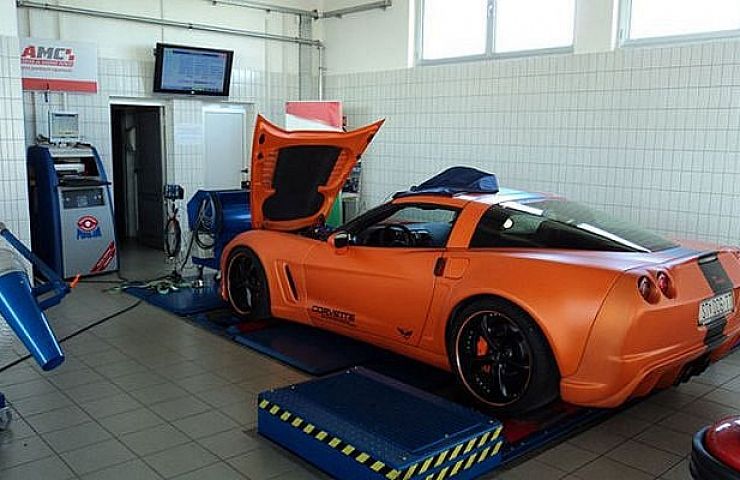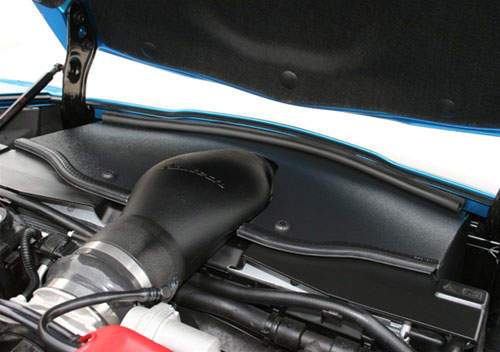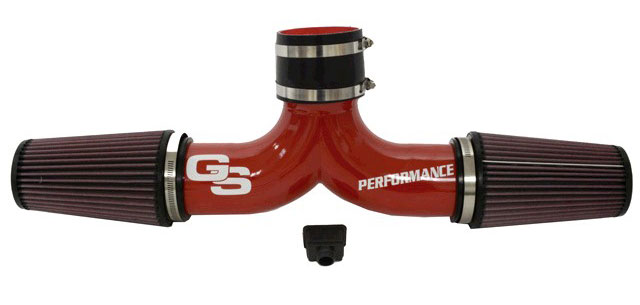Contents
If you’re looking for a relatively easy way to add some power to your high-performance car, modifying the cold air intake (CAI) and exhaust systems is a good place to start.
By reducing restrictions up front and at the muffler, it’s possible to significantly boost horsepower while keeping the car emissions-compliant.
Cold air packages are available from both original equipment and aftermarket manufacturers, in the form of basic kits, carbon fiber, and ram air components. Geoff Skorupa, owner of Next Level Performance near Orlando, Fla. recommends that do-it-yourselfers take a conservative approach.
Cold Air Pros and Cons
Skorupa said:
Depending on the OEM and level restriction in the stock vehicle, some manufacturers offer two levels of cold air modification. The first is less restricted than the stock version, but not open enough to set a code. This is a great place to start, since it will safely boost horsepower without creating performance problems.”
On the other end of the spectrum are ram air kits that extend into the grille to move air into the engine faster. While they offer greater performance enhancements, car owners need to beware of the danger of water intrusion.
Skorupa continued:
Here in Florida where there is frequently water on the road during our summer storm season. We have seen problems with these bottom breathers. On cars such as the Corvette with extremely low air intakes, the ram air kits can actually suck water into the engine, resulting in hydro locking the engine, and causing rod and piston damage.
Most of the air filters in cold air intake kits are designed to be cleaned and re-oiled, but car owners need to be careful about how much oil they apply.
Skorupa said:
This is a case when less is more. If the air filter gets soaked, the oil gets into the engine and mass air flow sensor and sets a code.
A Cat Back System
The second half of the modification is to open up the back end with a cat back system. OEM mufflers add a great deal of restriction in order to minimize exhaust noise. Skorupa recommends going with a stainless steel system.
Shop now for a cat back system
This eliminates the possibility of rust build-up that will shorten the life of the system. Companies also make kits with different amounts of loudness, ranging from a slightly more exhaust note to very aggressive race car sounds.
Quality aftermarket manufacturers such as Corsa utilize Helmholtz resonators in their cat back systems.
“When you take the restriction out of the muffler the car may develop a drone at about 1,700 rpm,” Skorupa explained. “The resonator eliminates the drone that can be very annoying at cruising speeds.”
Custom exhaust systems include less restrictive mufflers and cat back systems that eliminate the muffler entirely. Different exhaust tip styles and colors also add some style to the car’s back end.
How Do You Prove Cold Air Intake HP Gain?
The only way to document if your new intake and exhaust components deliver on the manufacturers’ promise is to get the vehicle on a dyno. Skorupa recommends a base dyno run before beginning a cold air and cat back modification. That way the owner will know exactly how much modifications have increased the vehicle’s performance.
One thing’s for sure: To get the most out of your investment, you’ll need to have the engine tuned for the added airflow.
Does a Cold Air Intake Increase MPG?
Whenever gas prices rise, drivers look for ways to improve their fuel economy. While some folks may swear by their new cold air intake’s efficiency improvement, these numbers are extremely difficult to document. Any positive change in MPG will be compromised each and every time you put your foot in it.
Simply put, there are infinite variables. Repeated cruise control runs over the same stretch of highway may show a difference. Or not.
Is a Cold Air Intake Worth It?
Cold air and cat back modifications don’t yield the huge horsepower gains of superchargers, of course. But they are a simple and relatively inexpensive way to make a noticeable difference in a car’s performance.
Most importantly, a 30-horsepower gain might be the competitive edge you need to take the checkered flag on race day.







